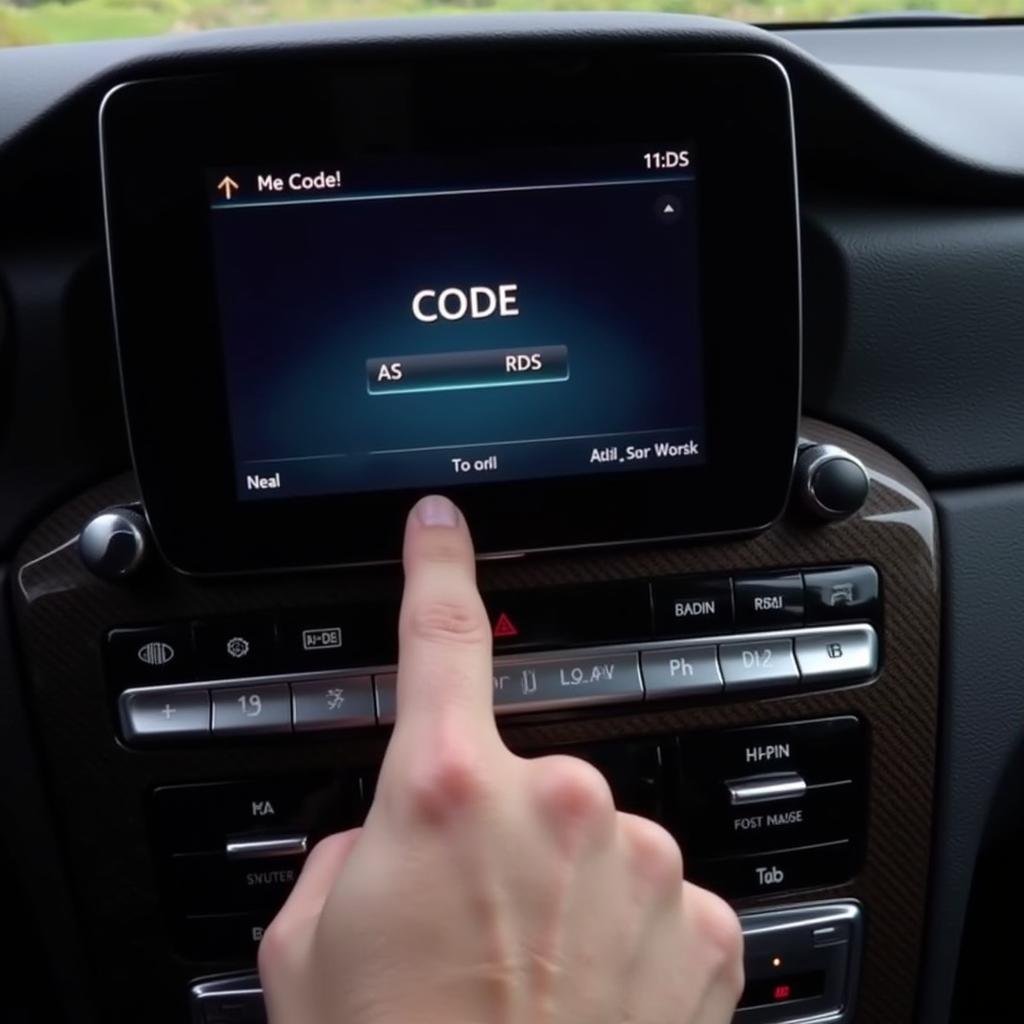The eco idle battery plays a crucial role in modern vehicles, powering essential systems when the engine is off to improve fuel efficiency. Understanding how it works, maintaining it properly, and diagnosing potential issues can save you money and frustration down the road. This guide dives deep into the world of eco idle batteries, covering everything from basic functionality to advanced troubleshooting techniques.
What is an Eco Idle Battery and How Does it Work?
Eco idle, also known as stop-start technology, automatically shuts off the engine when the car is stationary, like at a red light, and restarts it when you press the accelerator. This process requires a robust power source to keep essential systems like the radio, lights, and climate control running smoothly while the engine is off. That’s where the eco idle battery comes in. Unlike traditional car batteries primarily designed for engine starting, eco idle batteries are built to withstand the frequent charge-discharge cycles inherent in stop-start systems. They are typically Absorbent Glass Mat (AGM) or Enhanced Flooded Battery (EFB) types, offering superior performance and durability.
Key Differences Between Eco Idle and Traditional Batteries
While both serve the purpose of providing electrical power, eco idle batteries differ significantly from conventional car batteries. Eco idle batteries are designed for deep-cycle operation, meaning they can be discharged and recharged repeatedly without significant degradation. Traditional batteries, on the other hand, are optimized for providing a large burst of power to start the engine but are less tolerant to deep discharges.
Understanding Battery Types: AGM vs. EFB
- AGM (Absorbent Glass Mat): AGM batteries use a glass mat to absorb the electrolyte, making them spill-proof and vibration-resistant. They offer excellent deep-cycle performance and are ideal for vehicles with advanced start-stop systems and high electrical demands.
- EFB (Enhanced Flooded Battery): EFB batteries are an improved version of traditional flooded lead-acid batteries. They incorporate design enhancements like thicker plates and improved electrolyte circulation, allowing them to handle the increased cycling demands of basic start-stop systems.
 AGM vs. EFB Battery Comparison
AGM vs. EFB Battery Comparison
Common Eco Idle Battery Problems and Solutions
Like any car component, eco idle batteries can experience issues. Recognizing the symptoms and knowing how to address them can prevent unexpected breakdowns.
Diagnosing and Troubleshooting
- Slow Engine Cranking: This can indicate a low battery charge or a failing starter motor.
- Frequent Stop-Start System Malfunctions: A weak eco idle battery may not be able to support the system’s frequent cycling.
- Electrical System Issues: Dimming lights, malfunctioning accessories, and warning lights on the dashboard can all point to a battery problem.
“A properly functioning eco idle battery is critical for the seamless operation of modern vehicles,” says John Miller, Senior Automotive Electrical Engineer at Advanced Auto Solutions. “Regular maintenance and timely replacement are crucial for avoiding costly repairs and ensuring optimal vehicle performance.”
Maintaining Your Eco Idle Battery for Optimal Performance
Proper maintenance can significantly extend the life of your eco idle battery.
Tips for Extending Battery Life
- Regular Testing: Have your battery tested annually by a qualified technician to assess its health and identify potential issues early on.
- Minimize Parasitic Draw: Avoid leaving accessories like lights and the radio on when the engine is off.
- Keep Terminals Clean: Clean battery terminals with a wire brush and baking soda solution to prevent corrosion.
- Proper Charging: If necessary, use a battery charger specifically designed for AGM or EFB batteries.
 Eco Idle Battery Maintenance Tips
Eco Idle Battery Maintenance Tips
“Investing in a high-quality eco idle battery and following proper maintenance practices will not only improve fuel efficiency but also enhance the overall driving experience,” adds Sarah Johnson, Lead Automotive Technician at Green Auto Repair. “Remember, prevention is always better than cure.”
Conclusion
The eco idle battery is an essential component of modern vehicles, enabling fuel-saving stop-start technology. Understanding its function, recognizing potential problems, and practicing proper maintenance will ensure reliable performance and prevent costly repairs. By following the tips outlined in this guide, you can keep your eco idle battery in top condition and enjoy the benefits of a more efficient and environmentally friendly driving experience.
FAQ
- How long does an eco idle battery typically last? Eco idle batteries typically last 3-5 years, depending on usage and driving conditions.
- Can I replace an eco idle battery with a traditional battery? It’s not recommended. Traditional batteries are not designed for the frequent cycling of stop-start systems and will likely fail prematurely.
- How can I test my eco idle battery? A qualified technician can test your battery using specialized equipment.
- What causes an eco idle battery to fail prematurely? Common causes include excessive heat, deep discharges, and parasitic draw.
- How much does an eco idle battery cost? The cost varies depending on the type (AGM or EFB) and the vehicle’s make and model.
- What are the signs of a failing eco idle battery? Signs include slow engine cranking, frequent stop-start malfunctions, and dimming lights.
- How can I improve my eco idle battery’s lifespan? Regular testing, minimizing parasitic draw, and keeping terminals clean can help extend battery life.

